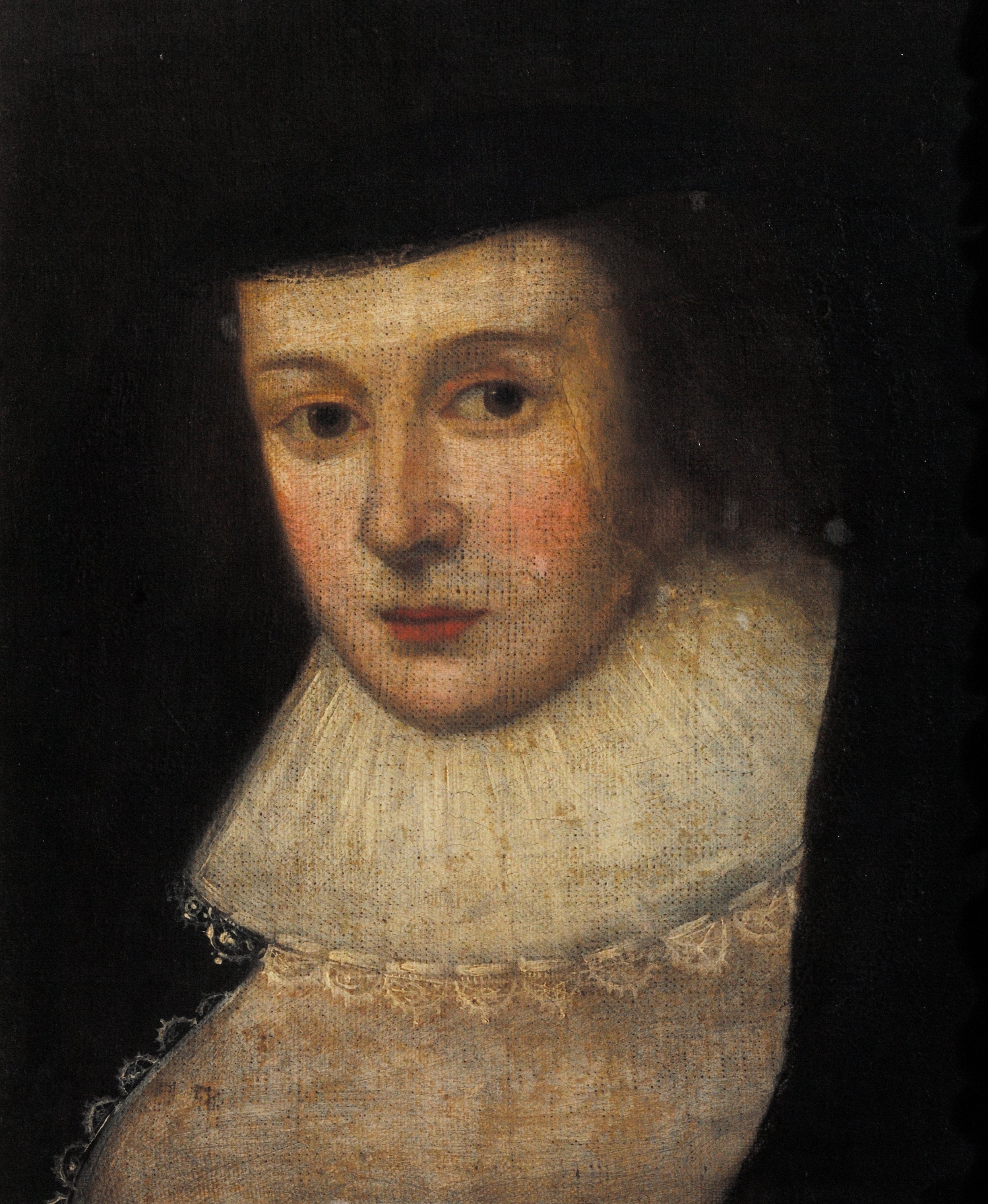13. Not Mary Queen of Scots, by an unknown artist
 Portrait of an Unknown Lady, unknown artist, H 34.3 x W 29.2 cm, oil on canvas
Portrait of an Unknown Lady, unknown artist, H 34.3 x W 29.2 cm, oil on canvas
At first
sight, this portrait appears to be a somewhat mysterious addition to the
collection at St John's. The sitter, her identity unknown, peers at the viewer
from the surrounding shadows. This painting is an early nineteenth-century copy
of a portrait of an unknown woman in the Bodleian Picture Collection. However, when
the painting appeared in a 1926 catalogue of the portraits at St John's, it was
described as an image of Mary Queen of Scots. In this case of disputed
identity, there remains no obvious connection to the College. Quick brush
strokes and a thin paint layer expose the weave of the canvas beneath and the
rough quality of the copy makes its acquisition as a significant work of art improbable.
My research looks
at portraits of sixteenth- and seventeenth-century women in a university
context, and the curious presence of this painting in the St John's collection
is an example of some of the more interesting challenges of studying these
kinds of images. A closer look into its
history reveals the intriguing story of this painting.
The panel
portrait at the Bodleian, on which this canvas copy is based, dates to c.1610.
The panel had shown a heavily overpainted image of Mary Queen of Scots with a
more elaborate partlet and ruff and an additional veil. In 1838, picture
restorer Simeon Collins revealed an entirely different painting by removing the
uppermost paint layer. This discovery uncovered the image of a woman who could
no longer be said to represent Mary Queen of Scots. The Bodleian has several
images copied from the painting before its restoration, but the St John's
version appears to be the only copy to reproduce the original underpainting.
The Oxford Journal of 30 October 1841 indicates that Collins completed some
restoration work for St John's College. Collins was also a painter and it is
possible that this rough copy of the original Bodleian panel is the work of his
own hand, perhaps given as a gift to the College as a result of his work there.
The St John's
copy highlights the merits of the practice of copying for developing our
understanding of the portraits in the University's collections. While the
Bodleian copy is the original, and a more detailed and fluent painting, it has
suffered damage and discolouration. The St John's copy is a rough sketch of the
original. However, to researchers it has represented an alternative record of
the painting's visual impact at the time of its restoration in 1838.
The
relationship between the St John's unknown lady and the panel at the Bodleian
also reveals the extent of the practice of overpainting, a common phenomenon for
paintings of the age of the original panel. Sometimes overpainting was limited
to changing details or adding inscriptions, which could have a significant
effect on identification and attribution. However, this portrait demonstrates
that complete overpainting could result in the representation of an entirely
different individual. This raises the question of whether one paint layer
should be considered more valid or original than another. The decision,
sometime between c.1610 and 1838 to paint a popular style of portrait of
Mary Queen of Scots over the unknown lady demonstrates her continuing prominence
beyond the sixteenth century in which she lived. In its overpainted form, the
portrait was given to the Bodleian by Alderman William Fletcher of Oxford in 1806
and was perhaps accepted to contribute to the University's growing collection
of eminent figures, including several sets of portraits of royalty. It is
striking to me that, now that the portrait has been restored, a different, currently
unknown, woman is commemorated in the Bodleian collection. The privileging of
the underlying image, considered more authentic by nineteenth-century picture
restorers and antiquarians, has led to the commemoration of a seventeenth-century
woman, who may have had no connection to the university, in an institutional
space where female involvement was profoundly limited at the time in which she
lived.
View
the painting on Art UK here.
 Anna Clark is a second year DPhil student at St John's College.
She works in collaboration with the National Portrait Gallery researching the
histories and afterlives of portraits of early modern female patrons in Oxford
and Cambridge Colleges.
Anna Clark is a second year DPhil student at St John's College.
She works in collaboration with the National Portrait Gallery researching the
histories and afterlives of portraits of early modern female patrons in Oxford
and Cambridge Colleges.